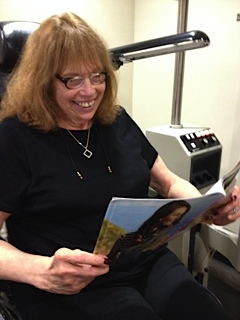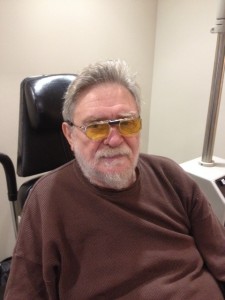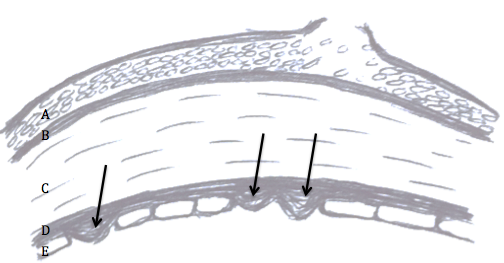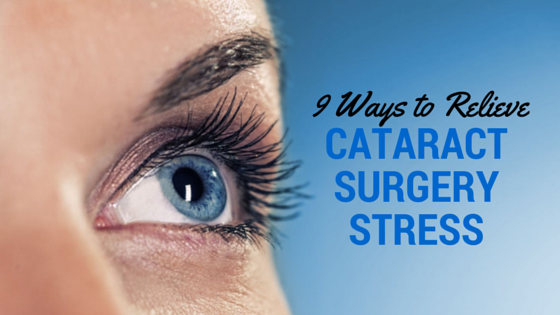Vision loss does not have to result in isolation and withdrawing from rewarding and enjoyable activities that life has to offer. Jim Vorndran, one of my long-time low vision patients who suffers from macular degeneration wrote: “The greatest obstacle is fear…fear of the unknown and of apparent helplessness. It is difficult to admit to myself and to others that I can no longer do the things I used to do with almost no effort. But once I have begun to embrace this, I am ready to begin to learn to walk once again. “
Is There Life After Vision Loss?
Jim wrote: “Vision loss can be a source of frustration but I also see it as an opportunity, and in some strange way as a gift. It has slowed me down so that I can pay greater attention to what is going on around me.”

Macular degeneration is the primary cause of vision loss in the US, followed by diabetic retinopathy and glaucoma. There are steps to take in order to continue enjoying daily life and reduce the isolation that vision loss can bring.
Following is a list of six steps to follow in order to maintain quality of life and to be pro-active in finding ways to cope.
- Be informed about your eye condition
- Schedule a low vision evaluation
- Establish a “Wish List”
- Low vision devices and vision rehabilitation
- Community resources and volunteering
- Incorporate technology resources
Learn as much as possible about your eye condition. Ask your eye doctor what level of vision you have and where you see best in your field of view. Macular degeneration results in loss of central vision while the peripheral vision is still healthy. Glaucoma has the opposite effect. Ask about the prognosis of your condition, treatment options (both medical and rehabilitative),ways to slow down the progression, and current research and clinical trials in this field. Be proactive about how the progression of your condition is affecting your vision. Most eye doctors will have written materials and you can read these on your own, or ask a spouse or family member to read it to you. This will help them to understand your condition as well.
Many of my patients and their families had never heard about low vision care. Low vision is defined as “vision which is insufficient to do what you want to do”. Most will mention that their glasses are not 
Vision loss does not have to mean discontinuing everything you did before. It might just mean a different way of doing things. It is first important to write a list of things you would like to be able to do. The top three are usually: reading, driving, and watching TV. Other wish list items will include sewing, playing bridge, cooking, etc. Once you write this list, you can then track down the resources that will help you fulfill this.
For example, while a handful of low vision patients may still be able to continue driving (to be determined by trained specialists), others will need transportation resources such as Access, talking devices, magnification devices or software, books on tape, etc.
Some of these devices and/or low vision therapy can help you fulfill your wish list. These include simple hand-held lighted magnifiers to more sophisticated assistive-technology devices such as a CCTV, and prescription telescopes. A low vision specialist can help determine if you are a candidate for low vision therapy, or if one of these devices would be appropriate and what your insurance would cover.
Support groups, such as the Macular Degeneration Partnership, can be a helpful resource to share and gain experiences from others who are coping with the same condition. One of my patients, Bonnie D., started a support group at her church, when she realized that several others also had AMD. It was successful, and they met once a month, learning from each other.
Some people also find rewarding experiences in volunteering to help others. One patient goes to a nursing home via public transportation twice a month to sit with those who are bedridden and accompany them. She said it helps her to forget her own difficulties and to be more optimistic when she sees there are others who need more help.
As Jim V. writes “For me, a major challenge has been to overcome resistance to using electronic devices but now that I am freeing myself from that frustrating challenge, I am learning about many opportunities available.” Jim is now an avid iPad user since the font size can be easily increased and the user can switch to voice-over to read what is on the screen. He was able to receive technology training at a local center for the blind and partially sighted. He has discovered magnification software, apps for iPhone an iPad such as ZoomReader.
These are examples of how quality of life can continue even after vision loss. Life can still be enriching, engaging, and enterprising. It all depends on you.
List of Resources:
Braille Institute
Classes, training, on-site demonstrations of assistive-technology
www.brailleinstitute.org
Access Transportation Services
www.accessla.org
Computer Screen Readers
This is a free screen reader for the blind and visually impaired.
www.nvaccess.org
AI Squared
Computer software and other products that magnify and/or read the screen: Zoom Text, Zoom Reader for iPhones
www.aisquared.com
Support Group
Macular Degeneration Partnership
AMD.org
6/25/15
 Lisa Limtiaco, OD
Lisa Limtiaco, OD
Dr. Richlin, OD & Associates
Beverly Hills, CA




















